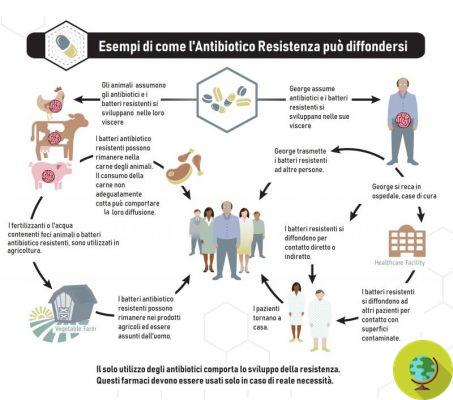
We have talked several times about the problem of antibiotic resistance developed by certain bacterial strains, a phenomenon that worries scientists all over the world who are committed, through research, to finding a solution that protects people from the consequences of this situation on human health. The first results are now beginning to be seen: a new English research has in fact identified the mechanism that bacteria use to exchange genetic information and thus become antibiotic-resistant.
Don't store avocado like this: it's dangerous
We have talked several times about the problem of the development of certain bacterial strains, a phenomenon that worries scientists all over the world who are committed, through research, to finding a solution that protects people from the consequences of this situation on human health. We are now starting to see the first results: a new English research has in fact identified the mechanism that bacteria use to exchange genetic information and become like that antibiotic-resistant.
The research, conducted by the University of London Birkbeck in collaboration with University College London (UCL) and financed by the Wellcome Trust foundation, for the first time managed to identify the process of type IV bacterial secretion, composed of a secretion mechanism and a molecular structure that differ from the other systems observed to date. Put simply it is the ability of bacteria to isolate genetic material, moving it and moving it on the cell wall in such a way then that it can be done share it with other bacteria.
The mechanism takes place in the inner and outer cell membrane connected by a sort of pendulum that crosses the space between them (periplasm). Both in the inner and outer membrane there are pores that allow the secretion of substances.
It is thanks to this mechanism that the bacteria are able to pass them genetic information concerning antibiotic resistance. But not only that, it seems that the same system also allows the secretion of toxins which occurs during bacterial infections that cause extensive damage to health (ulcer, whooping cough or severe pneumonia).
To achieve this, the researchers, led by Professor Gabriel Waksman, used sophisticated electron microscopes to observe how the system acted in the case ofEscherichia Coli, one of the antibiotic resistant bacteria.
This study, published in Nature, it is a fundamental first step to be able to stem the phenomenon of antibiotic resistance which in the next few years could become a serious threat to the human population. The mechanism has been unveiled, still partly to be explored, and now it is necessary to find new compounds capable of stopping the secretion process IV and thus stop the spread of genes that carry antibiotic resistance information.
Read also:
- Antibiotic resistance on the rise: correct use is essential
- Antibiotic Resistant Bacteria? They are born on farms
- Bacteria: This is how antibiotic resistance spreads through the environment


























